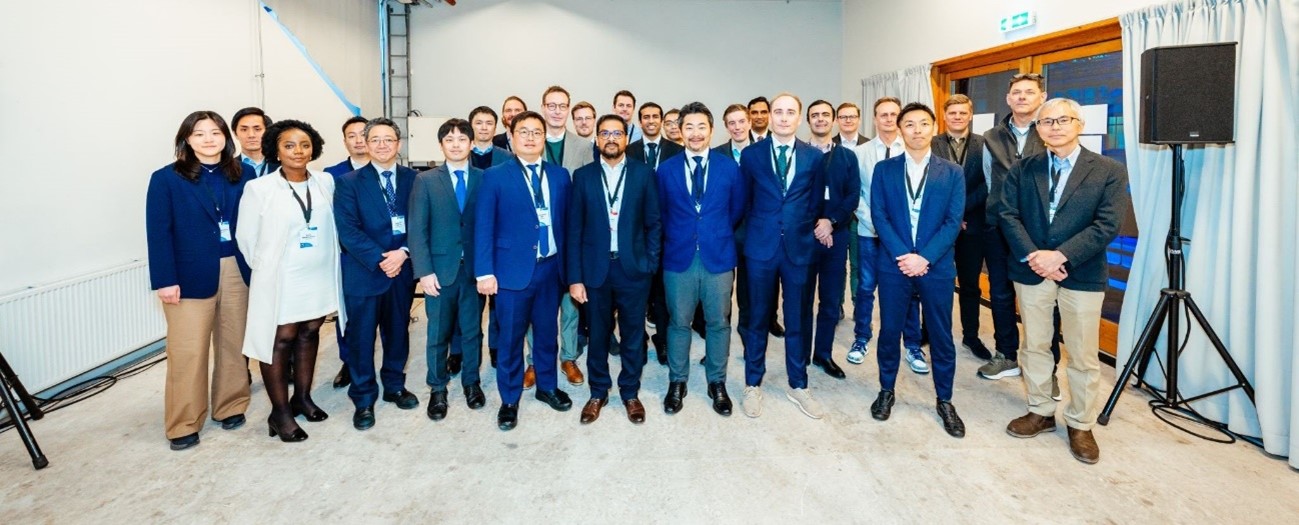
Global Ro-Ro Community develops Guidelines for Calculating GHG Emission Intensity for Ro-Ro Ships
TOKYO : On April 14, the Global Ro-Ro Community (GRC)* including Eastern Car Liner Ltd., Kawasaki Kisen Kaisha, Ltd., Mitsui O.S.K. Lines, Ltd., Nippon Yusen Kabushiki Kaisha, Wallenius Wilhelmsen ASA, and ClassNK (herein after referred to as the “six members”), announced guidelines for calculating GHG emission intensity for Ro-Ro ships,** such as car carriers, in conjunction with the international non-profit organization Smart Freight Centre (SFC),***aiming to reduce greenhouse gas (GHG) emissions in the logistics sector. These guidelines introduce a common calculation method, enabling shippers to accurately measure Scope 3**** emissions, and will further promote decarbonization in the shipping industry.
In recent years, interest in carbon emissions (carbon footprint)throughout the lifecycle of products and services has been increasing. But this has not been without challenge, in particular, the accurate measurement of GHG emissions in maritime transport and differences arising in individual calculation methods.
The six members participated in the GRC hosted by SFC and developed a standard model for calculating GHG emissions through open discussions ensuring fairness and transparency with stakeholders involved in Ro-Ro ships (shipping companies, shippers) and third-party verification organizations. The standard model complies with the ISO 14083***** and GLEC (Global Logistics Emissions Council) framework and was announced at the SFC annual event “Smart Freight Week” held in Amsterdam in March. Derived from the standard model presented by GRC, it now features as a set of guidelines on the SFC website. In the future, the SFC plans to collect actual data on environmental performance on a ship-by-ship basis and publish average high-precision emission intensity data for the industry.
Consequently, the initiative provides a cross-industry first step towards decarbonizing global logistics and contributes to promoting measures against global warming.
The guidelines:Deep-sea Ro-Ro Ship Greenhouse Gas Emission Intensity Calculation Methods
* Global Ro-Ro Community (GRC) Established in April 2024, the GRC is composed mainly of major Ro-Ro operators, which account for approximately80% of the world’s automobile transport capacity.
** Ro-Ro Ships Cargo vessels that allow automobiles, trucks, trailers, construction machinery, and agricultural machinery to drive directly onto the ship. This includes car carriers and ferries.
*** Smart Freight Centre (SFC) Based in the Netherlands, SFC is anon-profit organization that operates globally to address climate change in the freight transport sector. It has a track record of developing guidelines for calculating GHG emissions from Ro-Ro ships within Europe.
**** Scope 3 Indirect GHG-emissions associated with an entire corporate supply chain, including emissions that occur across the supply chain and outside the organization’s direct control, such as raw-material sourcing, product transport, product use, and disposal.
***** ISO14083 An international standard for the calculation and reporting of GHG emissions, focusing specifically on emissions from freight and passenger transport. ISO14083:2023 – Greenhouse gases — Quantification and reporting of greenhouse gas emissions arising from transport chain operations.
